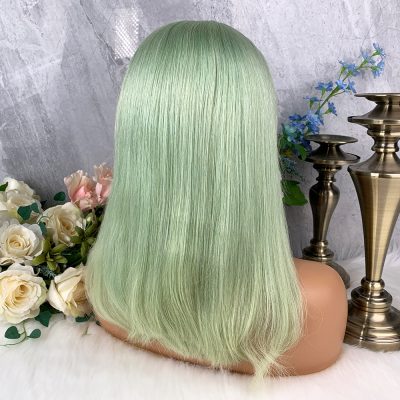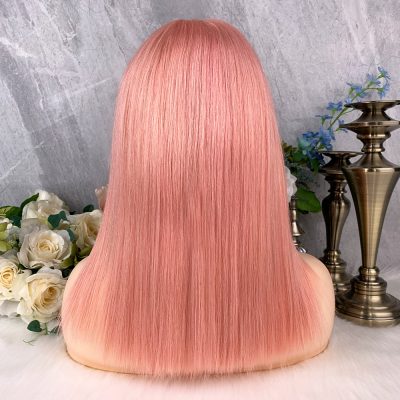Proper care is essential for maintaining the longevity and appearance of your wig. Whether you have a synthetic or human hair wig, here are some wig care tips to help you keep it looking its best:
1. Handle with Care:
- Always handle your wig gently, just as you would with your natural hair. Avoid pulling or tugging on the wig, as this can damage the fibers or cause them to come loose.
2. Brush Regularly:
- Use a wig brush or a wide-toothed comb to detangle the wig. Start at the tips and work your way up to the roots. Hold the wig at the cap to prevent tension on the hair.
3. Washing:
- Follow the manufacturer’s care instructions for washing your wig. In general:
- For synthetic wigs, use a wig shampoo and cold water. Gently soak and swirl the wig, then rinse thoroughly.
- For human hair wigs, you can use a mild, sulfate-free shampoo. Wash in cool to lukewarm water.
- Avoid hot water as it can damage synthetic fibers and human hair.
- Be gentle when washing, and do not rub the hair vigorously.
- After washing, use a conditioner specifically designed for wigs to maintain softness.
4. Drying:
- Gently pat the wig with a clean, dry towel to remove excess water. Do not wring or twist the wig.
- Place the wig on a wig stand or mannequin head to maintain its shape while drying. Avoid direct sunlight and heat sources like hairdryers, as they can damage synthetic fibers or human hair.
- Allow the wig to air dry naturally. If you must use a hairdryer, use a low-heat setting for human hair wigs only.
5. Styling:
- For synthetic wigs, avoid using heated styling tools like curling irons or straighteners unless the wig is specifically labeled as heat-resistant.
- For human hair wigs, you can style them using heat tools, but use a heat protectant spray and low to medium heat settings.
6. Storage:
- Store your wig on a wig stand or mannequin head to maintain its shape and prevent tangling.
- Keep the wig in a cool, dry place away from direct sunlight, dust, and moisture.
7. Avoid Friction:
- Minimize friction by wearing a wig cap underneath the wig, especially if you have sensitive skin or experience discomfort.
8. Avoid Contact with Chemicals:
- Avoid exposing your wig to harsh chemicals, including chlorine and hair sprays, as they can damage the fibers.
9. Regular Inspection:
- Inspect your wig regularly for any signs of damage or wear. Address any issues promptly to prevent further damage.
10. Professional Maintenance: – Consider taking your wig to a professional wig stylist for routine maintenance, such as trimming, restyling, or color touch-ups for human hair wigs.
By following these wig care tips, you can extend the life of your wig and ensure it continues to look its best, whether it’s synthetic or made from human hair.




















